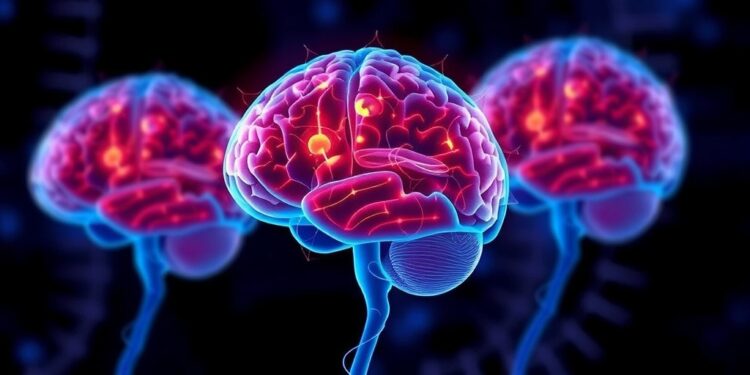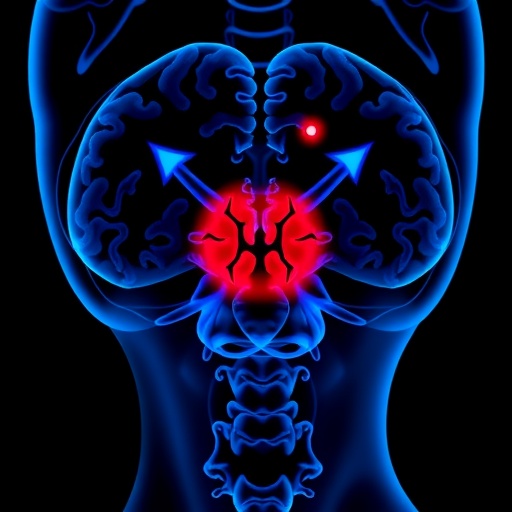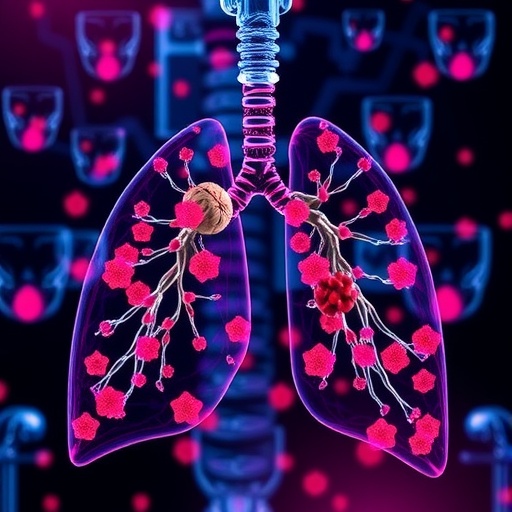UCLA scientists are embarking on a groundbreaking journey to revolutionize the treatment of glioblastoma, the most aggressive form of brain cancer known for its grim prognosis and high mortality rates. Their innovative strategy centers on the remarkable possibility of reprogramming aggressive cancer cells into benign, non-dividing cells, thereby diminishing the threat they pose to patients. This transformative research opens a window into a new world of oncological therapies that might significantly improve survival rates and quality of life for those afflicted with this devastating disease.
The research team’s findings, published in the prestigious Proceedings of the National Academy of Sciences, describe a promising combination of traditional radiation therapy with forskolin, a natural compound derived from the Coleus forskohlii plant. Forskolin is noted for its potential to influence cell fate and differentiation. By utilizing this plant-derived agent in conjunction with radiation treatment, researchers found a remarkable way to induce a dormant state in glioblastoma cells, a state characterized by the inability to proliferate or metastasize.
When tested in meticulously designed mouse models, the combined regimen of radiation and forskolin led to notable enhancements in survival rates. Such improvements are especially significant considering that glioblastoma remains a formidable adversary in neurology, with a median survival expectancy of just 15 to 18 months following initial diagnosis. The research illustrates not just an extension of life, but also the potential for better therapeutic outcomes, heralding a new phase in the combat against this relentless disease.
“Radiation therapy, despite its efficacy in obliterating substantial numbers of cancer cells, engenders a temporary flexibility within certain tumor cells,” explains Dr. Frank Pajonk, a prominent figure in radiation oncology at UCLA and the study’s senior author. “This characteristic creates a unique opportunity for us to intervene and guide these cells away from their aggressive nature. By introducing forskolin, we can shepherd these cells into an inert, neuron-like or microglia-like form.” In this transformed state, the threat of tumor regrowth diminishes, presenting an intriguing avenue for further exploration.
Glioblastomas are notoriously resilient, exhibiting an uncanny ability to regenerate post-treatment and evade standard therapeutic protocols. This resilience is largely attributed to glioma stem cells, which possess regenerative capabilities. Conventional treatments, including surgery followed by chemotherapy and radiation, have failed to keep pace with glioblastoma’s adaptive strategies over the last two decades. However, the recent discoveries suggesting that radiation therapy might enhance the adaptability of glioma stem cells provide fertile ground for innovation in treatment methodologies.
Encouraged by these revelations, the UCLA research team focused their inquiry on the synergistic effects of radiation together with forskolin. Notably, forskolin’s role in promoting cell differentiation arises from its purported ability to stimulate cells to mature into non-dividing neurons, thus promising a novel approach to alter the aggressive nature inherent in glioblastoma cells.
“Our strategy is groundbreaking because it ultimately exploits the temporal dynamics induced by radiation therapy,” observes Ling He, an assistant project scientist at UCLA and the study’s lead author. “Rather than compelling cancer cells to mature through traditional interventions, we strategically leverage radiation to create temporary cellular malleability. This malleability allows us to effectively transition glioma cells into less harmful cell types, such as neuron-like or microglia-like cells.”
To validate the efficacy of this hybrid treatment, the research team meticulously assessed the cellular behaviors and responses to the combined intervention. This included observing changes in gene expression profiles, which were investigated through RNA sequencing techniques. Moreover, the use of single-cell RNA sequencing enabled a granular understanding of the individual transitions glioblastoma cells underwent in response to treatment, providing invaluable insights into how they might be coaxed into a more benign state.
In their experimental designs, the researchers noted that forskolin was able to traverse the formidable blood-brain barrier, inhibiting glioma stem cells significantly and decelerating overall tumor proliferation. This accomplishment is crucial, as the blood-brain barrier has historically posed a significant challenge for chemotherapeutic agents attempting to address brain malignancies. The efficacy of forskolin in this context is a notable highlight of the study.
The results of the experiments indicated that the combination of radiation and forskolin not only curtailed tumor growth in the murine models but also led to instances of long-term tumor control. In instances of the highly aggressive tumor model, the combination therapy lengthened the median survival from 34 to an extended 48 days. A similar pattern emerged in mouse models with less aggressive gliomas, where median survival soared from 43.5 days to an impressive 129 days, clearly marking the potential of this innovative dual therapy.
Despite these encouraging results, the researchers express cautious optimism, having observed that while many mice benefitted significantly from the treatment, there were instances of tumor recurrence—underscoring the complexity of glioblastomas and their capacity for resilience. Such findings signal an urgent need for researchers to refine dosing strategies and explore alternative regimens that can enhance the durability of therapeutic responses.
The study articulates a striking shift in perception towards glioblastoma treatment paradigms. It challenges long-held beliefs about static cancer cell identities, instead revealing that glioma cells have significant adaptive potential, capable of transformation into microglia-like cells—immune cells of the brain—under the right circumstances. This unexpected plasticity raises profound questions about the nature of tumor biology and points towards an exciting future for cancer research.
Researchers such as Dr. Harley Kornblum and his team from UCLA underscore the importance of these findings in framing new strategies to address glioblastoma. The integrated approach potentially disrupts mechanisms of tumor progression by targeting glioma cell plasticity, offering a new perspective on improving patient outcomes through innovative therapeutic combinations.
As the research advances, Dr. Pajonk and his colleagues remain steadfast in their mission: to overhaul the standard care protocols for glioblastoma. By harnessing the adaptability of malignant cells and utilizing state-of-the-art methods to steer their development towards harmless forms, the possibility of significantly enhancing survival outcomes emerges as a realistic objective on the horizon.
In conclusion, the research undertaken at UCLA marks a critical juncture in the ongoing battle against one of the most formidable variants of cancer. With continued exploration and refinement, the potential for this groundbreaking strategy holds promise, offering hope to countless individuals impacted by glioblastoma. As we unravel the complexities of cancer biology, innovations like these could pave the way for a new era of therapeutic strategies and ultimately improve the lives of those fighting this relentless disease.
Subject of Research: Glioblastoma Treatment Strategies
Article Title: UCLA Researchers Discover New Hope for Glioblastoma Patients
News Publication Date: October 2023
Web References: Proceedings of the National Academy of Sciences
References: DOI
Image Credits: UCLA Health
Keywords: Glioblastoma, Cancer Treatment, Radiation Therapy, Forskolin, Tumor Cells, Stem Cells, UCLA Research, Brain Cancer, Survival Rate, Cancer Research, Cell Differentiation, Blood-Brain Barrier.
Tags: brain cancer treatmentenhancing quality of life for cancer patientsglioblastoma therapy advancementsimproving survival rates in glioblastomainnovative oncology researchnon-dividing cancer cell strategiesnovel glioblastoma treatment approachesovercoming aggressive brain tumorsplant-derived cancer treatmentsradiation therapy and forskolinreprogramming cancer cellsUCLA brain cancer study





